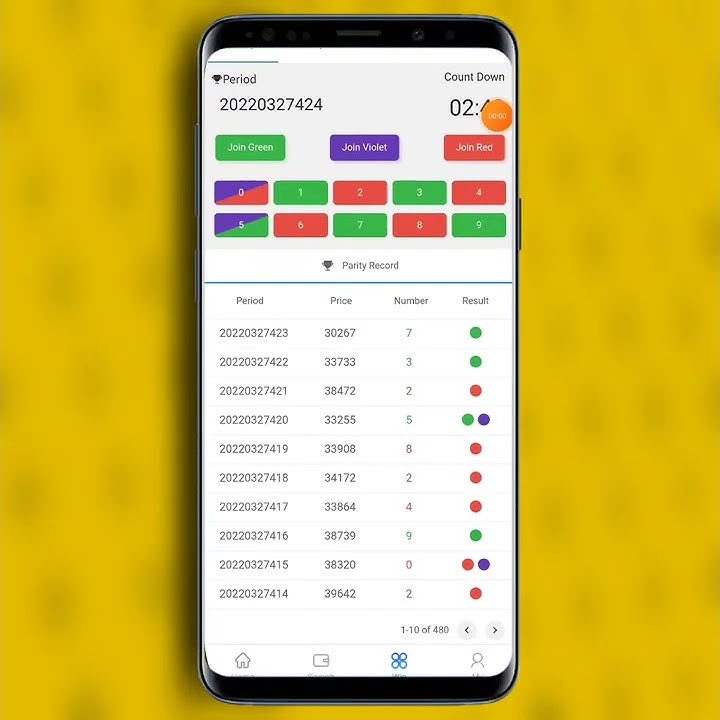
Online color prediction games have surged in popularity as an entertaining and simple way to test luck and potentially win money. These games allow players to wager on the outcome of randomly selected colors—such as red, green, or violet—in quick, fast-paced rounds. However, as with any platform involving monetary transactions and chance, skepticism arises: are these games fair, or could they be rigged? To uncover the truth, let’s dive into the mechanics of these games, examine players’ concerns, and separate fact from fiction.
How Do Color Prediction Games Operate?
Color prediction games are typically powered by random number generators (RNGs), which ensure that outcomes are unpredictable and unbiased. RNGs rely on algorithms to generate random results, making it impossible for players or operators to foresee the winning outcome in advance.
The fairness of RNGs often depends on the integrity of the platform offering the games. Reputable platforms use certified RNG software and undergo independent audits to confirm that results are genuinely random. In contrast, less reliable platforms may lack this transparency, leading to skepticism about whether outcomes are truly fair.
Common Player Concerns
Pattern Perception: Many players believe they can identify patterns in the game’s outcomes, which leads to questions about whether results are pre-determined. For example, a streak of the same color appearing consecutively might make players suspicious of tampering.
Winning and Losing Cycles: Players may experience periods of consecutive wins followed by losses, creating the illusion of a “system” designed to manipulate outcomes. This perception is often reinforced by cognitive biases, such as the gambler’s fallacy—the mistaken belief that previous outcomes influence future results.
Trust in Platforms: A significant concern is whether the gaming platform itself manipulates results to ensure the house benefits. For platforms without clear transparency measures, players may suspect rigged outcomes.
Debunking the Myths
- RNGs Are Designed for Fairness: On trusted platforms, RNGs generate results that are truly random. Each round is independent, meaning previous outcomes have no bearing on future results. For instance, if red appears five times in a row, it does not increase or decrease the likelihood of red appearing again in the next round.
- Streaks Are Normal in Random Systems: Streaks of one color or clusters of similar outcomes are common in any random system. They may appear intentional but are, in fact, a natural consequence of randomness. Statistical independence ensures that streaks are purely coincidental.
- Reputable Platforms Prioritize Fair Play: The best gaming platforms invest in technologies like blockchain and third-party audits to guarantee fairness. Blockchain, for example, allows players to verify that game outcomes are untampered and transparent.
Spotting Red Flags
While many color prediction games operate fairly, it’s essential to recognize potential red flags that could indicate unethical practices:
- Lack of Licensing or Certification: If a platform does not disclose information about its RNG certifications, audits, or gaming licenses, it might not adhere to fair play standards.
- Opaque Terms and Conditions: Trustworthy platforms clearly outline their rules, payout systems, and betting limits. A lack of transparency in these areas is a cause for concern.
- Unrealistic Promises: Platforms advertising guaranteed wins or incredibly high payouts may be misleading players. Remember, color prediction games are designed around chance, and no outcome is assured.
How to Ensure a Safe Gaming Experience
- Choose Reputable Platforms: Research the platform’s credentials, user reviews, and licensing information before you start playing. Look for certifications from independent auditing organizations.
- Verify RNG Fairness: Platforms like 91 club integrating blockchain technology provide an additional layer of transparency, as players can cross-check results in real-time.
- Set Limits: To maintain a healthy gaming experience, set both time and spending limits. Treat the games as entertainment rather than a source of income.
- Avoid Emotional Decisions: Winning or losing streaks can cloud judgment. Stay rational and avoid over-betting based on recent outcomes.
The Role of Regulation
The transparency of online color prediction games often depends on regulatory oversight. In regions with established gaming laws, platforms must meet strict standards for fairness and security. Players in such regions are more likely to encounter ethical platforms that prioritize integrity.
Conversely, in unregulated markets, players must exercise greater caution. Ensuring fair play becomes the responsibility of the player, making it vital to choose platforms with verifiable practices.
Conclusion
So, are online color prediction games rigged? The answer depends on the platform. Reputable platforms with RNG certifications and transparent practices prioritize fairness and integrity, giving players a trustworthy experience. However, the industry also contains unreliable operators, highlighting the importance of diligence in selecting where to play.
Ultimately, understanding the mechanics behind these games, such as RNGs and randomness, allows players to separate fact from fiction. With informed decisions and a responsible approach, players can enjoy the excitement of color prediction games while minimizing doubts or risks.